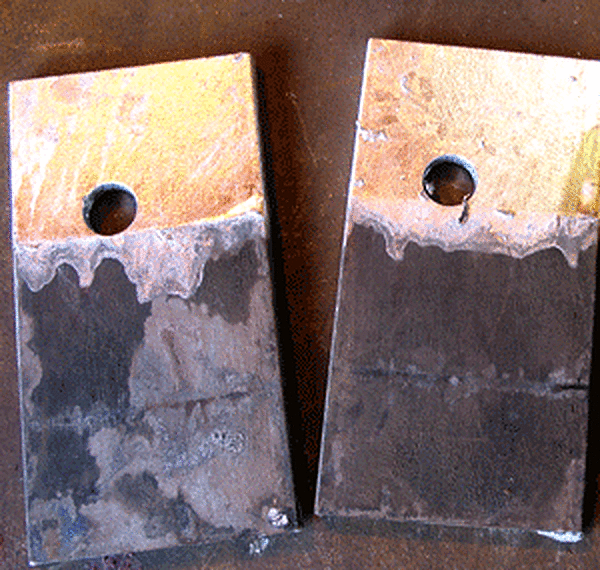Masking
During the galvanizing processes, all surfaces are cleaned and coated with corrosion-inhibiting zinc. For some purposes, intentionally ungalvanized areas are required. Masking may be performed to accomplish this.
Masking is treating a portion of the steel surface so the area remains ungalvanized. Masking is not an exact science; additional work may still be required to remove unwanted zinc.
In some cases, it may be easier to grind off the zinc coating after galvanizing than to mask the material.

There are four major categories of masking materials:
- Acid-resistant, high-temperature tapes
- Water-based pastes and paint-on formulations
- Resin-based, high-temperature paints
- High-temperature greases and thread compounds
In addition to these designated masking materials, the American Galvanizers Association conducted a study to determine which commercially available masking materials work best at preventing galvanizing on masked areas. Six commercially available masking materials were identified to successfully prevent galvanizing on one or more surface types, including flat plate, bolt threads, and buried threaded holes. For flat surfaces, greater than 90% of the masked area remained ungalvanized during testing. The successful masking materials included (in no particular order):
Stop Galv(no longer available)- GE 100% Silicone Caulk
- Maskote Zinc Stop-Off
- NAPA RTV Red
- Galva Stop by Puma Chemical
- DAP Household Adhesive Sealant
Masking materials may not be 100% effective. Additional and detailed performance data is presented in the charts in Appendix 1 and additional pictures are presented in Appendix 2. Full details the study can be found in the Galvanizing Note Masking Materials for Preventing Hot-Dip Galvanizing.
If you plan to apply a masking material, consult with your galvanizer to arrive at the best solution for any particular design and be sure to notify him of any areas purposely masked to avoid inadvertent removal of the masking compound.
